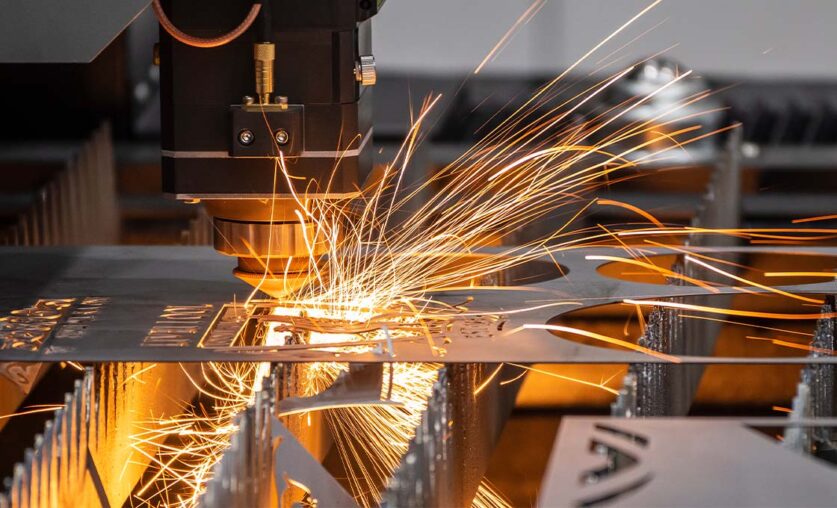In a world where speed and precision define success, manufacturers are increasingly turning to prototype sheet metal as a critical tool in the product development process. Whether you’re building a medical device, launching a new consumer product, or engineering an aerospace component, sheet metal prototyping enables you to test, refine, and validate designs before moving into large-scale production.
More than just a preliminary step, sheet metal prototyping offers real-world insights into functionality, manufacturability, and performance. It allows companies to catch design issues early, reduce costs, and get to market faster with confidence.
Defining Prototype Sheet Metal Fabrication
Prototype sheet metal fabrication refers to the process of creating a small number of metal parts—typically one-off or low-volume—used for design validation, testing, or demonstration. These prototypes are fabricated from flat sheet metal using techniques like laser cutting, bending, welding, and finishing.
Unlike theoretical CAD models or plastic prototypes, sheet metal prototypes are made from the actual material that will be used in production, offering a realistic representation of strength, weight, tolerance, and functionality.
How Prototype Sheet Metal Supports Product Development
1. Validates Design Assumptions
Engineers use prototypes to check if a product performs as expected. It verifies structural strength, fit within assemblies, access for fasteners, and interaction with other parts.
2. Reduces Manufacturing Risks
By evaluating a physical model before mass production, companies can spot design flaws or production challenges early—avoiding costly mistakes.
3. Accelerates Time to Market
Prototyping streamlines the design iteration process. Teams can test and revise designs quickly without waiting for long lead times tied to production tooling.
4. Ensures Functional Testing
Prototypes made from actual metals—such as aluminum or stainless steel—can be subjected to real-world stress, vibration, and thermal tests, giving accurate performance feedback.
The Prototype Sheet Metal Workflow
Creating a sheet metal prototype involves a series of steps that combine digital design with advanced fabrication techniques.
Step 1: Design & CAD Modeling
Designers create 3D CAD files that define the geometry, material thickness, bend radii, holes, and assembly features of the part.
Step 2: Material Selection
Choosing the right metal is crucial. Common options include:
- Aluminum: Lightweight, corrosion-resistant, easy to machine
- Stainless Steel: Strong, heat- and chemical-resistant
- Mild Steel: Economical and easy to form
- Copper & Brass: Used in electrical or decorative applications
Step 3: Cutting
Sheet metal is cut using:
- Laser cutting for precision and speed
- Water jet cutting for thick or heat-sensitive materials
- CNC punching for parts with numerous holes or perforations
Step 4: Bending and Forming
Parts are shaped using press brakes, rollers, or stamping machines. Tolerances are tightly controlled to ensure accuracy.
Step 5: Assembly (If Needed)
If the prototype includes multiple parts, they are assembled using:
- Welding (TIG, MIG, spot)
- Fasteners (rivets, screws)
- Tabs and slots for quick-fit assemblies
Step 6: Surface Finishing
Surface treatment enhances durability and appearance. Options include:
- Powder coating
- Anodizing
- Zinc plating
- Polishing or brushing
Step 7: Inspection & Testing
Finished parts undergo quality checks for dimensional accuracy, weld quality, surface condition, and functional testing where applicable.
Where Prototype Sheet Metal Is Used
Electronics
Enclosures, brackets, heat sinks, and shielding components are commonly prototyped to ensure proper assembly and heat management in electronic products.
Automotive
Engine brackets, battery trays, dashboard supports, and exhaust parts are prototyped to test under vibration, heat, and structural loads.
Aerospace
Prototype sheet metal helps develop light, strong parts for aircraft interiors, structural reinforcements, or ground support systems.
Medical Devices
From surgical tool casings to diagnostic equipment enclosures, prototypes are essential for ergonomic design, sterilization compatibility, and regulatory compliance.
Industrial Equipment
Custom metal housings, control panels, and machine guards are often prototyped to ensure safety, service access, and environmental resistance.
Benefits of Prototype Sheet Metal Fabrication
| Benefit | Description |
|---|---|
| Speed | Fast production times compared to traditional tooling-based methods |
| Accuracy | Tight tolerances and material-specific precision |
| Flexibility | Easy to make changes between iterations |
| Real-World Testing | Enables evaluation under actual load, heat, and assembly conditions |
| Cost-Efficient | Saves money by catching issues before mass production |
Limitations and Challenges
Although highly valuable, prototype sheet metal does have some limitations:
- Higher Cost Per Unit: Prototypes are more expensive per piece than mass-produced parts due to setup and manual labor.
- Complex Shapes Require Expertise: Complex bends or tight tolerance features demand skilled technicians and specialized tools.
- Material Waste: Smaller runs can lead to less optimized sheet usage.
These issues are usually outweighed by the benefits—especially when the cost of failure in mass production is considered.
Modern Trends in Sheet Metal Prototyping
The future of prototyping in metal fabrication is being shaped by several technological advancements:
1. Automated Design Analysis
Design-for-manufacturing (DFM) software now automatically checks CAD models for manufacturability, suggesting design improvements in real time.
2. Integration with Additive Manufacturing
3D metal printing is being used alongside sheet metal to prototype complex features that can’t be stamped or bent.
3. Sustainability
Modern fabrication shops are implementing energy-efficient machines, recycling programs, and cleaner finishing processes.
4. Cloud-Based Prototyping Services
Digital platforms allow engineers to upload CAD files, receive instant quotes, and manage prototype orders online—streamlining the process.
Conclusion: The Foundation of Better Manufacturing
In any manufacturing project, getting the prototype right is half the battle. Prototype sheet metal fabrication gives teams a clear view of how a part behaves, fits, and performs in its actual environment. It reduces uncertainty, accelerates development, and lays a solid foundation for full-scale production.
From early design verification to rigorous real-world testing, sheet metal prototyping transforms ideas into functional, manufacturable solutions. For companies aiming to innovate, improve quality, and reduce costs, investing in quality sheet metal prototypes isn’t optional—it’s essential.




